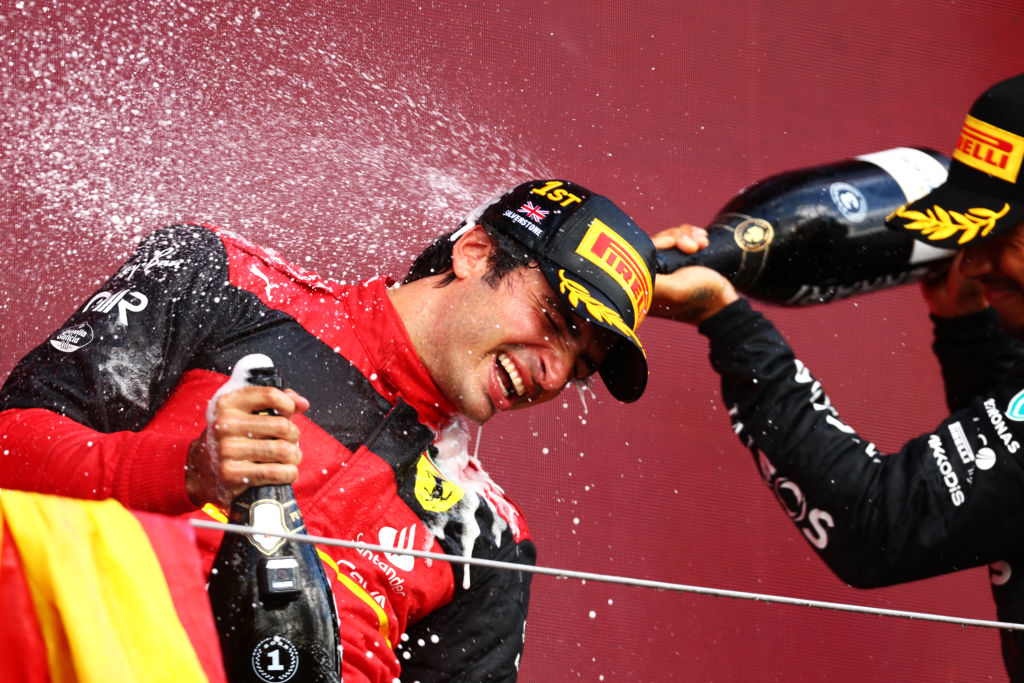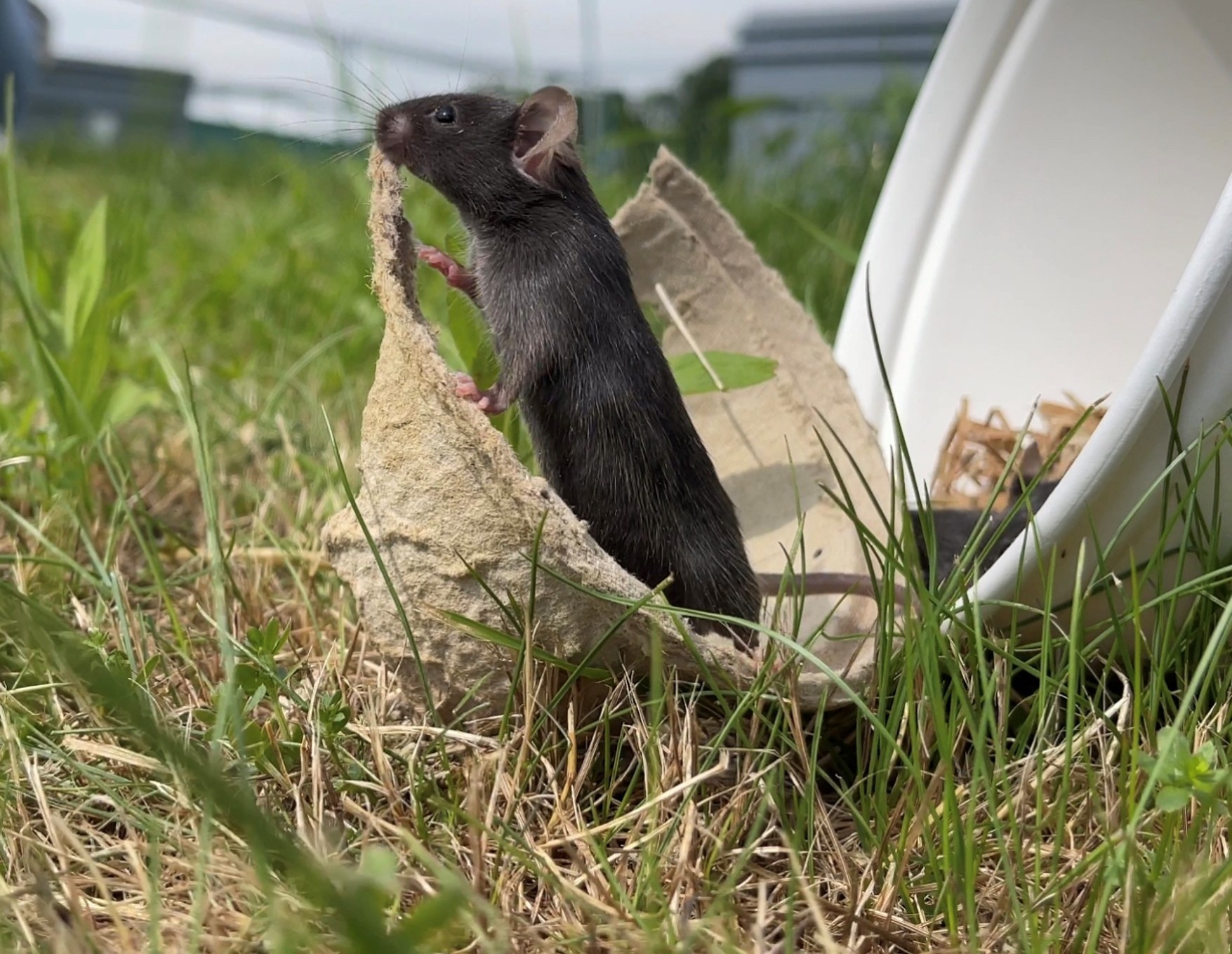TOWCESTER, U.K. — If you somehow managed to forget that this week's grand prix was in England, congratulations. You might be the only person on the entire planet who did. I got the thick of the on-track pandering to the mostly British crowd, but by all accounts, the international broadcasts with British commentators were at it, too, even more so than is normal. It was the weekend of the Brits, for the British, which means that the next bit is said carefully not to feed into the ego of the British isles at large: it was the best race of the season.
To be fair to the patriotic hype, the location did matter. Half of the teams in F1 are British, and as we all know, the home race fans provide anywhere from one-tenth to three-tenths of a second in race pace. Practically speaking, those teams have their factories nearby and stocked with parts—Red Bull is right next door in Milton Keynes—making it far easier to provide upgrades locally rather than ship them halfway across the globe. Williams upgraded almost the entirety of Alexander Albon's car. Mercedes was talking up their own car, doubly terrifying because Mercedes chose to talk up their car in anticipation for their home weekend. And really, in spite of the combined powers of Lando Norris and four other U.K.-based teams, it was Mercedes's home weekend, with their British factory and their two British drivers, one of them Sir Lewis Hamilton.
Mercedes improving was exciting for more than just the team—a three-way battle for first during the race? Inject it directly into my veins, etc. etc. But expected storylines have a habit of not coming into play, and the weather threw a wrench in the "show off Mercedes' improvement" works. Rain in the first free practice session resulted in the neat sight of steam sluicing off the asphalt, but it wasn't conducive to actual running. An even more wet qualifying scrambled up the race order we might've expected, kicking off Carlos Sainz's rollercoaster of a weekend with his first pole position in F1 ever, after 150 races of waiting. It looked good for Ferrari, more than anything else. Until it didn't.
Home race advantage only stretched as far as the very first corner of the race for two of the British contingent, due to a terrifying five-car accident that resulted in Zhou Guanyu's car flipping upside down, skidding across the track, and then skipping over the tire barriers into the catch fence. Zhou was alright—infinite cheers to the halo. The crash eliminated three drivers, George Russell, who self-DNF'd to check on Zhou and so didn't get the chance to show off Mercedes's pace, and Albon, who didn't get the chance to show off the new Williams upgrades, as well as Zhou, who is nearly British at this point, considering how much it's mentioned that he moved to Sheffield for the sake of his racing career.
Today was a reminder that F1 remains a high-speed, high-risk sport that is always right on the edge.
— Formula 1 (@F1) July 3, 2022
We are so thankful to the advances in safety that mean both Zhou Guanyu and Alex Albon are safe and well. pic.twitter.com/BJ8PPDG2av
Immediately following the race restart, Charles Leclerc lost a piece of his front wing in a collision, and Max Verstappen suffered a tire puncture and floor damage from debris. It was disastrously unlucky for Verstappen and Red Bull, but a tremendous break for Ferrari. Running in P1 and P2 and Red Bull virtually eliminated from contention, they only had two real opponents. Lewis Hamilton was the first—formidable, to be sure, but no match for the second one, which was themselves.
Leclerc's front wing damage might've been integral to knocking Red Bull out of the race, but it also hampered his ability to pass. Considering that he was faster than Sainz in pace, this was a problem. Sainz, not being told by the team to let Leclerc through, is a race car driver and naturally didn't make it easy for him. And while Leclerc begged the team to let him through, Hamilton calmly approached like the villain in a horror movie, setting fastest lap after fastest lap in rhythm to the crowd's cheers.
Ferrari chose to rectify this by letting Sainz pit first, putting Leclerc in the race lead. The main issue with this, of course, is that Leclerc still had to pit, especially with Hamilton still catching him, and after he did, he ended up behind none other than Sainz, so that they could repeat the process all over again. Ferrari eventually told Sainz to let Leclerc through, but only after Sainz had already held Leclerc up for a couple laps. The only thing that spared Ferrari's slow draw on team orders was that Hamilton's pit stop took over four seconds to complete.
Leclerc then would've ended up P1 (or P2, if you're optimistic about both Hamilton and the Mercedes car's capabilities), helping close the gap between him and Verstappen in the championship. The only problem is that when Ocon lost power, forcing the safety car to come out and opening up the chance for another pit stop, it gave Ferrari another opportunity to make a mistake.
Mattia Binotto said after the GP was over that Ferrari wanted to avoid double stacking their cars in the pit lane. A double stack, well-executed, would've put both Leclerc and Sainz in front of Hamilton, or, if Sainz had a slow stop, might have put Sainz behind Hamilton. But a Ferrari 1-3 with a chance at improvement would still be a better result than what they did have, which was a 1-4 with Leclerc fighting Alonso to the end. There are situations when double stacks have played out disastrously for teams—Mercedes's attempt in the 2020 Sakhir Grand Prix is one crowning example—but assuming that it would happen signifies incompetence or cowardice, or both. Maybe "if you no longer go for a double stack opportunity that exists" is the team equivalent of “if you no longer go for a gap that exists, you're no longer a racing driver.”
Ferrari chose to only pit Sainz for new soft tires as Mercedes also pit Hamilton, dooming Leclerc on older, harder tires and likely dooming Sainz, too, if he'd listened to Ferrari's instructions to put 10 car lengths between him and Leclerc when the safety car came back in. But Sainz, with Hamilton and Pérez breathing down his neck, ignored the suggestion, which is valid for self-preservation alone and—once the safety car withdrew after lap 41—successfully overtook Leclerc, probably singing happy songs to himself as he all but waltzed to his first ever race win.
So as Sainz had both the safety car and Ferrari's strategy to thank for his maiden race win, we have Ferrari to thank for enabling some of the best racing so far this season: a three- and occasionally four-way battle between Leclerc, Perez, and Hamilton (and Alonso), albeit with, to the surprise of nobody, uneven stewarding about what constitutes being pushed off the track.
Leclerc ⚔️ Perez ⚔️ Hamilton
— Formula 1 (@F1) July 3, 2022
Incredible scenes at Silverstone 🍿#BritishGP #F1 pic.twitter.com/TBZ6J9bfty
Pérez took P2, and Hamilton eventually passed Leclerc in a showdown that included a tight battle around Copse. After the race, Hamilton said, "[Leclerc is] a very sensible driver, clearly a lot different to what I experienced last year." Spicy, considering the example specifically addressed Copse, which naturally calls back to the crash between Hamilton and Verstappen at Silverstone last year. If you're interested in litigating a crash that happened a year ago, feel free to sound off in the comments section below, but the race wasn't about Hamilton vs. Verstappen, no matter how much the narrative was pushed prior to the race.
None of the promised narratives really lived up to expectations: We didn't get Hamilton vs. Verstappen, we didn't find out how effective the Williams upgrades were, we didn't get more fuel for F1 booing discourse (unless you count the woman behind me who took up a solitary cause to boo Verstappen every single time he passed), and we didn't really find out if Mercedes could make it a three-way fight because both Ferrari and Red Bull were having other issues. What we got was arguably better—perhaps not for discourse, though Ferrari strategy drama will always last a decent media cycle, but for watching. I mean, the racing! Hamilton's first stint on the medium tires! The four-way battle after the safety car! Ferrari trying to screw themselves the entire way to the finish line and only managing halfway with Sainz's first race win!
Sainz wasn't the fastest car on track for most of the race and suffered a plethora of miseries during: failing to meet his target times, dealing with Ferrari's sloppy communication, obeying team orders to let his teammate pass. It took Carlos Sainz Jr. 150 races to get his first win, a number only surpassed by Pérez's 190. Fortune is a fickle mistress, and Sainz got both ends. Funny how those things happen—41 laps, 150 races, and then you get all you could ask for, all at once.






